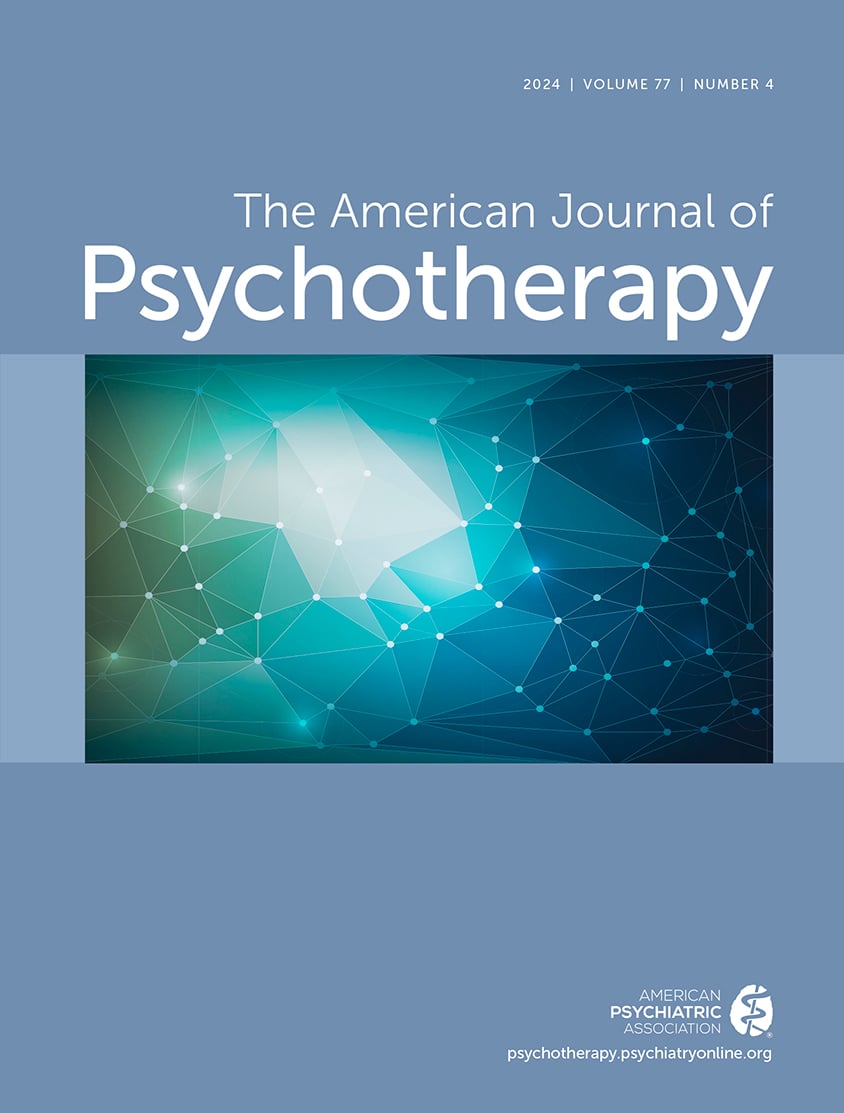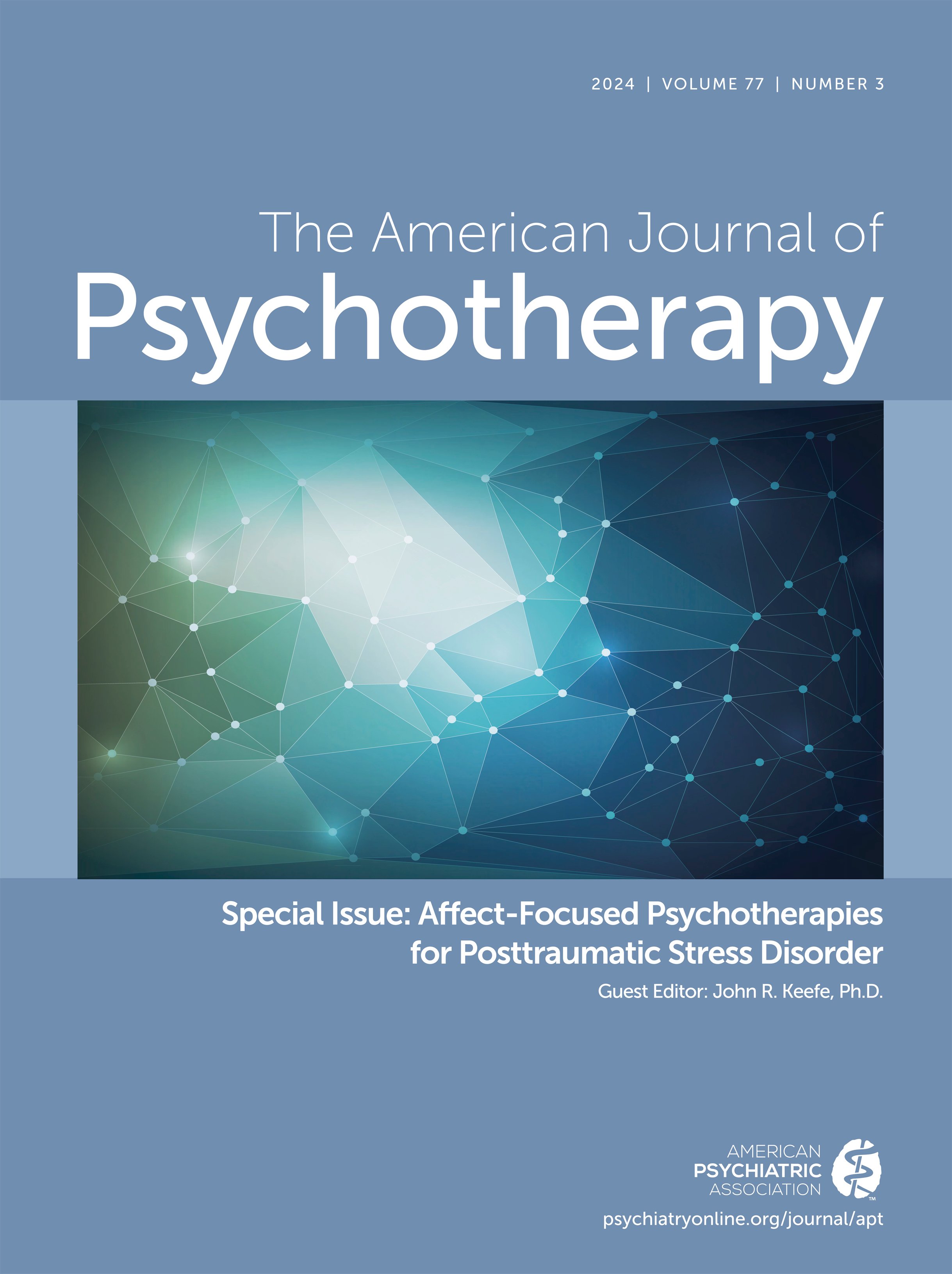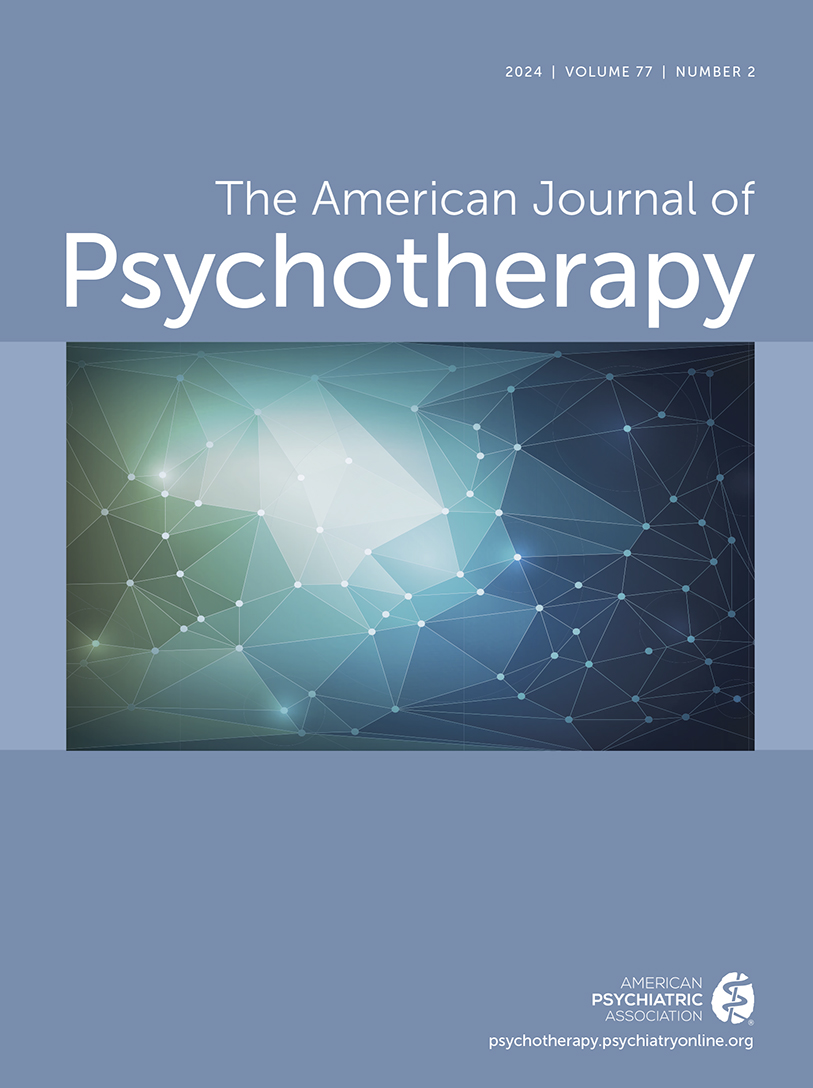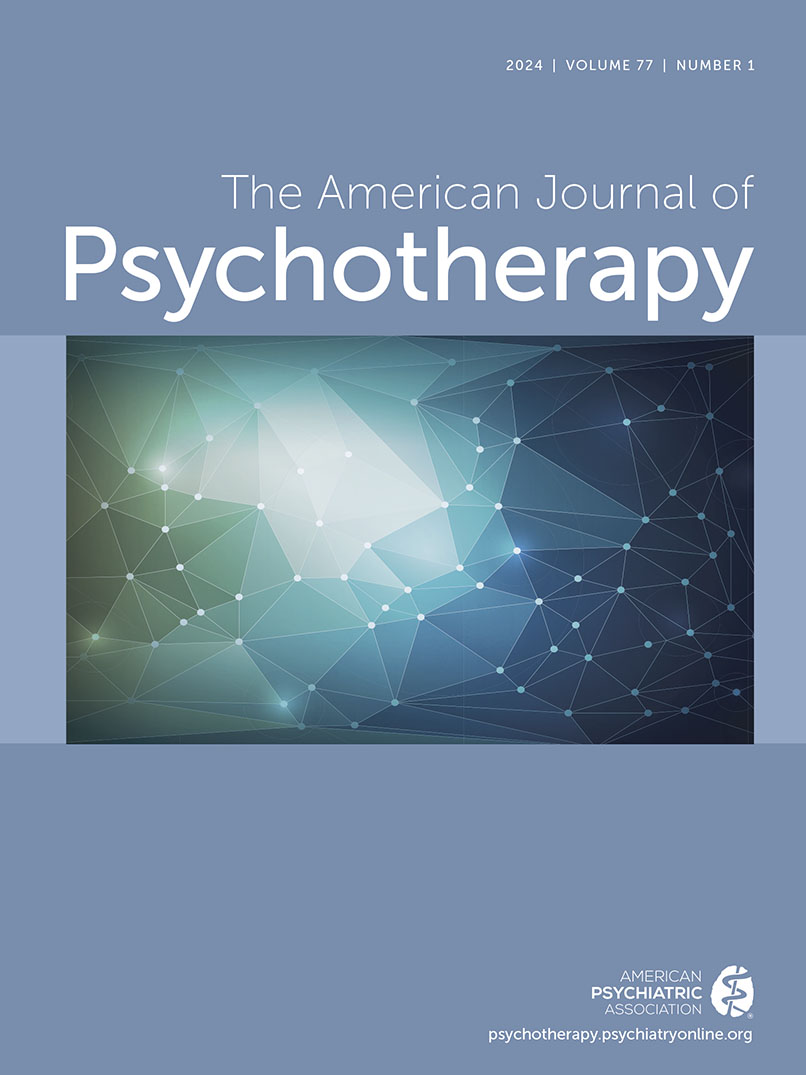American Journal of Psychotherapy
- Volume 48
- Number 1
- January 1994
Editorial
Articles
Publication date: 01 January 1994
Pages5–29The author describes the process of arriving at a developmental formulation and psychotherapeutic technique for the borderline adolescent. A variety of theoretical models of etiology and treatment are discussed, many of which conflict. The author points ...
https://doi.org/10.1176/appi.psychotherapy.1994.48.1.5Publication date: 01 January 1994
Pages30–51While narcissistic vulnerability is a central feature of both normal and pathological development during adolescence, the author proposes criteria to differentiate between them. The specific features of the narcissistic personality disorders, as it begins ...
https://doi.org/10.1176/appi.psychotherapy.1994.48.1.30Publication date: 01 January 1994
Pages52–63Supportive therapy and long-term expressive therapy in a structured framework are two modalities of treatment for acute and chronic characterological suicidal adolescents, respectively. Issues of family intervention, patient’s honesty, and ...
https://doi.org/10.1176/appi.psychotherapy.1994.48.1.52Publication date: 01 January 1994
Pages64–74The theoretical concept of transference-countertransference in the psychotherapeutic work with adolescents is approached from a more global, inclusive interactive view developed by tracing various modifications of Freud’s original theory by Jung, Fromm-...
https://doi.org/10.1176/appi.psychotherapy.1994.48.1.64Publication date: 01 January 1994
Pages75–84The critical-incident technique was used to obtain a list of 52 critical incidents defined by the behavior of patients who create special difficulties for psychotherapists. The critical incidents could be divided into four major categories: threat of harm,...
https://doi.org/10.1176/appi.psychotherapy.1994.48.1.75Publication date: 01 January 1994
Pages85–93Neuroscience is founded on a philosophy of mind known as identity theory. This paper reviews identity theory, essential human features that cannot be understood using identity theory, and an updated philosophy known as eliminative materialism. ...
https://doi.org/10.1176/appi.psychotherapy.1994.48.1.85Publication date: 01 January 1994
Pages94–101In 1895, Freud described a new and revolutionary method of understanding and treating patients suffering from hysteria. As a private practitioner, he had started treating patients nine years earlier. Some of these early patients were extremely disturbed, ...
https://doi.org/10.1176/appi.psychotherapy.1994.48.1.94Publication date: 01 January 1994
Pages102–110Parallel process is an unconscious process that takes place when a therapist replicates problems and symptoms of patients during supervision. This paper reviews types of parallel process, discusses several case examples, proposes ways in which the ...
https://doi.org/10.1176/appi.psychotherapy.1994.48.1.102Publication date: 01 January 1994
Pages111–119The traditional model of countertransference considers mainly therapist reactions to particular characteristics of their child patients. A broader model of countertransference is discussed here in which therapist reactions toward the child may be ...
https://doi.org/10.1176/appi.psychotherapy.1994.48.1.111Publication date: 01 January 1994
Pages120–140Recognizing those moments in psychotherapy when it is not useful or even counterproductive to speak directly to the patient, this paper discusses indirect communication as a therapeutic technique. Using this method, the therapist thinks aloud in the room ...
https://doi.org/10.1176/appi.psychotherapy.1994.48.1.120Case Report
Publication date: 01 January 1994
Pages141–154This article offers a review of our understanding of the nature of failure during individual psychotherapy when it occurs and the importance of continuity into group psychotherapy when necessary. Experiencing space and extensive tolerance in group ...
https://doi.org/10.1176/appi.psychotherapy.1994.48.1.141Book Review
Publication date: 01 January 1994
Pages155–156https://doi.org/10.1176/appi.psychotherapy.1994.48.1.155Publication date: 01 January 1994
Pages156–157https://doi.org/10.1176/appi.psychotherapy.1994.48.1.156Publication date: 01 January 1994
Pages157–158https://doi.org/10.1176/appi.psychotherapy.1994.48.1.157Publication date: 01 January 1994
Pages158–159https://doi.org/10.1176/appi.psychotherapy.1994.48.1.158Publication date: 01 January 1994
Pages159–160https://doi.org/10.1176/appi.psychotherapy.1994.48.1.159Publication date: 01 January 1994
Pages160–162https://doi.org/10.1176/appi.psychotherapy.1994.48.1.160Publication date: 01 January 1994
Pages162–163https://doi.org/10.1176/appi.psychotherapy.1994.48.1.162Publication date: 01 January 1994
Pages163–164https://doi.org/10.1176/appi.psychotherapy.1994.48.1.163Publication date: 01 January 1994
Pages165–166https://doi.org/10.1176/appi.psychotherapy.1994.48.1.165aPublication date: 01 January 1994
Pages167–168https://doi.org/10.1176/appi.psychotherapy.1994.48.1.167Publication date: 01 January 1994
Pages168–169https://doi.org/10.1176/appi.psychotherapy.1994.48.1.168Publication date: 01 January 1994
Pages169–170https://doi.org/10.1176/appi.psychotherapy.1994.48.1.169Publication date: 01 January 1994
Pages170–171https://doi.org/10.1176/appi.psychotherapy.1994.48.1.170Abstracts
Publication date: 01 January 1994
Pages173–174https://doi.org/10.1176/appi.psychotherapy.1994.48.1.173Past Issues
View Issues Archive
Vol. 77 | No. 4

Vol. 77 | No. 3

Vol. 77 | No. 2
